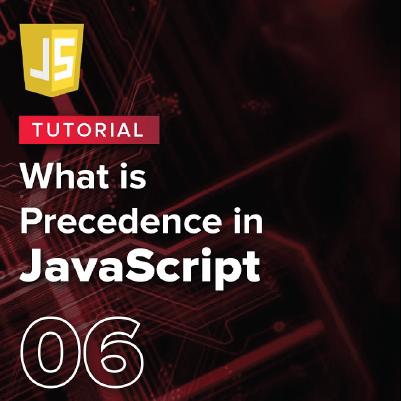For working professionals
Domains
Doctorate
Artificial Intelligence
MBA
Data Science
Marketing
Management
Education
Law
Gen AI & Agentic AI
Doctorate
For All Domains
IIITB & IIM, Udaipur
Chief Technology and AI Officer ProgramSwiss School of Business and Management
Executive Doctor of Business Administration from SSBMEdgewood University
Doctorate in Business Administration by Edgewood UniversityGolden Gate University
Doctor of Business Administration From Golden Gate UniversityRushford Business School
Doctor of Business Administration from Rushford Business School, SwitzerlandGolden Gate University
MBA to DBA PathwayLeadership / AI
Golden Gate University
DBA in Emerging Technologies with Concentration in Generative AIGolden Gate University
DBA in Digital Leadership from Golden Gate University, San FranciscoArtificial Intelligence
Degree / Exec. PG
IIIT Bangalore
Executive Diploma in Machine Learning and AIOPJ Global University
Master’s Degree in Artificial Intelligence and Data ScienceLiverpool John Moores University
Master of Science in Machine Learning & AIGolden Gate University
DBA in Emerging Technologies with Concentration in Generative AIExecutive Certificate
IIITB & IIM, Udaipur
Chief Technology and AI Officer ProgramIIIT Bangalore
Executive Programme in Generative AI for LeadersupGrad | Microsoft
Gen AI Foundations Certificate Program from MicrosoftupGrad | Microsoft
Gen AI Mastery Certificate for Data AnalysisupGrad | Microsoft
Gen AI Mastery Certificate for Software DevelopmentupGrad | Microsoft
Gen AI Mastery Certificate for Managerial ExcellenceOffline Bootcamps
upGrad
Data Science and AI-MLMasters

Paris School of Business
Master of Science in Business Management and TechnologyO.P.Jindal Global University
MBA (with Career Acceleration Program by upGrad)Edgewood University
MBA from Edgewood UniversityO.P.Jindal Global University
MBA from O.P.Jindal Global UniversityGolden Gate University
MBA to DBA PathwayExecutive Certificate
IMT, Ghaziabad
Advanced General Management ProgramData Science
Degree / Exec. PG
O.P Jindal Global University
Master’s Degree in Artificial Intelligence and Data ScienceIIIT Bangalore
Executive Diploma in Data Science & AILiverpool John Moores University
Master of Science in Data ScienceExecutive Certificate
upGrad | Microsoft
Gen AI Foundations Certificate Program from MicrosoftupGrad | Microsoft
Gen AI Mastery Certificate for Data AnalysisupGrad | Microsoft
Gen AI Mastery Certificate for Software DevelopmentupGrad | Microsoft
Gen AI Mastery Certificate for Managerial ExcellenceupGrad | Microsoft
Gen AI Mastery Certificate for Content CreationOffline Bootcamps
upGrad
Data Science and AI-MLMarketing
Executive Certificate
upGrad | Microsoft
Gen AI Foundations Certificate Program from MicrosoftupGrad | Microsoft
Gen AI Mastery Certificate for Content CreationOffline Bootcamps
upGrad
Digital MarketingManagement
Degree
O.P Jindal Global University
MSc in International Accounting & Finance (ACCA integrated)
Paris School of Business
Master of Science in Business Management and TechnologyGolden Gate University
Master of Arts in Industrial-Organizational PsychologyExecutive Certificate
Education
Education
Northeastern University
Master of Education (M.Ed.) from Northeastern UniversityEdgewood University
Doctor of Education (Ed.D.)Edgewood University
Master of Education (M.Ed.) from Edgewood UniversityDegree
Jindal Global University
LLM in Corporate & Financial LawJindal Global University
LLM in Intellectual Property & Technology LawJindal Global University
LLM in AI and Emerging TechnologiesJindal Global Law School
LLM in Dispute ResolutionGen AI & Agentic AI
Gen AI & Agentic AI
For fresh graduates
Domains
Software & Tech
Data Science
Management
Marketing
Software & Tech
Executive Certificate
International Institute of Information Technology, Bangalore
Executive Post Graduate Programme in Software Dev. - Full StackupGrad | Microsoft
The U & AI GenAI Certificate Program from MicrosoftOffline Bootcamps
upGrad
Full Stack DevelopmentData Science
Bootcamp
Offline Bootcamps
upGrad
Data Science and AI-MLManagement
Marketing
Bootcamp
upGrad Campus
Advanced Certificate in Performance MarketingOffline Bootcamps
upGrad
Digital Marketing- Study abroad
More
RESOURCES
BlogsCutting-edge insights on education
WebinarsLive sessions with industry experts
TutorialsMaster skills with expert guidance
Learning GuideResources for learning and growth
COMPANY
Careers at upGradYour path to educational impact
Hire from upGradTop talent, ready to excel
upGrad for BusinessSkill. Shape. Scale.
Offline CentresHands-on learning, near you
Experience centerImmersive learning hubs
About usOur vision for education
OTHERS
Refer and earnShare knowledge, get rewarded
JavaScript Courses
JavaScript is the world's popular programming language. It is a well-known scripting language for web pages used both on the front-end and back-end of the servers.

JavaScript Course Overview
JavaScript (JS) is a versatile and robust programming language used both on the front-end and back-end of the servers. It is a well-known scripting language for web pages, but many non-browser environments like Node.js, Adobe Acrobat, and Apache CouchDB also use it. JavaScript is a lightweight and interpreted programming language designed for network-centric applications.
JavaScript converts static pages into interactive pages and improves user interaction. You must incorporate some JS projects to enhance your resume, such as -
- Hangman Game
- JavaScript Calculator
- JavaScript Form Validation
- JavaScript Weather App
- Tic Tac Toe game
To start a simple JavaScript project, follow the basic three steps:
1. Create a project by optionally providing a project name -
- create-js-project [project-name]
- npm init js-project [project-name]
2. Choose the project name and your desired template.
3. Wait till the installation is complete, and then you can start with coding.
JavaScript is a client-side scripting language, meaning it can run in the web browsers on the client-side server. JavaScript is a dynamically-typed, interpreted language.
It is not a compiled language such as C++ or Java. In a compiled language, the source code is passed through a compiler which translates it into bytecode. The machine understands the bytecode and hence executes it. In JavaScript, there is no compiler. Instead, an interpreter reads the JavaScript code and runs it line by line. Many modern browsers use JIT (Just In Time) compilation. It compiles JavaScript to bytecode just as it is about to run.
![]() JavaScript is a must for students and professionals in the web development domain. It is a dynamic language and supports object-oriented, imperative, and declarative styles.
JavaScript is a must for students and professionals in the web development domain. It is a dynamic language and supports object-oriented, imperative, and declarative styles.
Some key advantages of learning JavaScript are as follows:
- JavaScript is the most popular programming language and is an excellent choice for programmers. After mastering JavaScript, you can create many front-end as well as back-end applications using JS frameworks and libraries.
- JavaScript is very popular and is used everywhere. It is installed in every modern web browser, including Chrome, Safari, and Mozilla Firefox. So, you don’t need an additional environment setup to learn JavaScript.
- JavaScript is used for mobile app development, desktop app development, and game development. Hence, you get many opportunities to learn and explore once you learn JavaScript.
- JavaScript is high in demand and offers a higher pay scale and decent job growth for professionals adept at it.
- It is a beginner-friendly programming language. It turns intricate details into abstracts. This makes JavaScript easy to learn. Also, it supports essential skills like object-oriented, imperative, and functional programming. You can apply these concepts while learning other skills like Java, C++, and Python.
- You can create visual effects, and eye-catching aesthetics to attract user attention and enhances interaction. Plus, you can add animations, scrolling videos, interactive maps, and other cool features.
You can use Javascript anywhere in a document. You must assess the performance to make it easy for the developers to find your scripts. The standard best practice is to place them at the head of the document. It also ensures that all Javascript has been loaded and executed before the document is displayed.
There are two ways to execute Javascript in a browser:
- Including your Javascript inside your HTML document
The most basic way to include Javascript in your HTML code
<script>
var x = 3;
alert(‘hello there, this Javascript is ‘+x)
</script>
This can be included anywhere in the project, and it would be executed. Some places are considered better than other places to put the code. Earlier, it was needed to comment out Javascript with an HTML comment to prevent the browsers from considering the code as HTML. This only applies to old browsers, so we need not incorporate this any longer. But if you use strict XHTML as your DOCTYPE, you must enclose the Javascript into the CDATA block to validate it.
- Linking to an external Javascript file
You must add an src attribute to your script element to link an external Javascript file.
<script type="text/javascript" src="testscript.js"></script>
The browser will load the file testscript.js on meeting this element in the page, and execute it. The content inside the script element will be skipped when you provide an src attribute. For example, the following code will load the file testscript.js and execute the code inside it, but it will not run the alert code written inside the script element:
<script type="text/javascript" src="testscript.js">
alert('This code will not be executed);
</script>
It is better to keep the code in an external Javascript file:
- Maintaining the code is easy as you can apply the same Javascript functionality to several HTML documents.
- The browser will cache your Javascript files. This means that the browser will keep a copy of your Javascript and store it on the device of the visitors surfing your site.
- It will be easy to find your Javascript file and modify it when needed,
JavaScript is a lightweight, robust programming and scripting language executed on a web browser, and it is easy to learn.
1. JavaScript Data Types
Data Types are fundamental to any programming language.
JavaScript can change the content of HTML. It allows three primitive types of data types to work with.
- Boolean(Boolean value true or false)
- Numbers (Numerical value)
- Strings (contain Characters)
JavaScript also defines NULL (represents no value ) and Undefined (represents undefined value), which define a single value.
It also supports a non-primitive data type known as Object (through which one can access members), Array (Collection of similar values), and RegExp (Regular expression), which is a composite data type. All numbers are defined as floating-point numbers using a 64-bit floating-point format in JavaScript. In JavaScript, it does not make a distinction between integers and floating-point numbers.
2. JavaScript Variables
JavaScript also has variables like other programming languages. Variables can be taken as names of storage locations. It has two variable types (i.e., Local Variable and Global Variable).
Note: In JS, a and A are different variables, Because JS(JavaScript) variables are case sensitive.
Before using any variable, we must declare it first and the rules for declaring variables in JS, also called Identifiers.
Name: It starts with a to z (or) A to Z, Underscores (_), or ‘$’ sign.
After the first letter, we use Digits (0 to 9).
JS(JavaScript)Variables are declared with the var keyword.
For example, correct declaration of variables.
var a=10;
var _name=”Aasha”;
Incorrect declaration of Variables.
var 56=30;
var *xx=120;
We can also declare multiple variables with “var” keywords.
var name,money;
Example 2:
<script>
var k=5;
var l=4;
var z=k+l;
document.write(z);
</script>
—> Output : 9
JavaScript Local Variables
- It is declared and accessible within a function or block. Function parameters are local to the function.
- If we declare the same name for a local and global variable. So, you can hide the global variable.
Example:
<script>
function abc(){
var k=10; // local variable
}
</script>
Example:
<script>
if (20<26){
var a=20; // JS local variable
}
</script>
JavaScript Global Variables
- It is declared and accessible from any function (outside the function) or outside a block with a window object called Global variable.
Example:
<script>
var x=100 ; // declared global variable
function xyz(){
document.writeln(x);
}
function abc(){
document.writeln(x);
}
xyz(); //calling JavaScript function
abc(); //calling JavaScript function
</script>
3. JS (JavaScript) Constant
Constants in JS are defined as “const”. The term ‘const’ does not define any constant value. Instead, it defines a constant reference to a value.
- JS (JavaScript), the ‘const’ variable must be assigned a value when declared. Use ‘const’ while declaring Object, Array, RegExp, and Function.
- Variables defined with ‘const’ cannot be redeclared and reassigned, and these are Block-scoped.
- Variables defined with ‘const’ can change the elements of a constant array and the properties of constant objects.
Example:
// const variable cannot be reassigned.
const x=1.234567;
x=1.23; // give an error
x=x+1; // give an error
// const variable must be assigned.
const x= 1.234567; // correctly assigned
// const variable must be assigned.
const x;
x=1.234567; //incorrectly assigned.
4.JS (JavaScript) Strings
JS Strings is a set of characters or sequence of characters used for storing and manipulating text or characters.
There are two ways to make strings in JS.
- String literal (Using Double quotes)
// var string_name=”My name is Thanos”;
- String Object (Using new keyword)
var string_name=new String(‘My name is Thanos”);
// new used to create an instance.
5.JavaScript String Methods
JavaScript String Methods help us to work with strings. JS treats primitive values as objects when executing methods of JS String.
- JS String charAt(index) Method: Returns the character at the given index.
Example:
<script>
var string=”helloworld”;
document.write(string.char(5));
</script>
Output: o
- JS String concat(str) Method: It joins two strings.
Example:
<script>
var string1=”Hello”;
var string2=”world”;
var string3=string1.concat(string2);
document.write(string3);
</script>
Output: ‘Hello world’
- JS String indexOf(str)Method: It Returns index values of given strings
Example:
<script>
var string=”hello world is my first printing string”;
var s1=string.indexOf(“world”);
document.write(s1);
</script>
Output: 6
- JS String lastIndexOf(str)Method: It returns the last index position of the string.
Example:
<script>
var string=”hello world index”;
var s1=string.lastIndexOf(“world”);
document.write(s1);
</script>
Output: 11
- JS String toLowerCase()Method: It returns a string in lowercase.
Example:
<script>
var string=”HELLO WORLD INDEX”;
var s1=string.toLowerCase();
document.write(s1);
</script>
Output: hello world index
- JS String to LowerCase() Method: It returns a string in uppercase.
Example:
<script>
var string=”hello world index”;
var s1=string.toUpperCase();
document.write(s1);
</script>
Output: HELLO WORLD INDEX
- JS String slice (beginIndex, endIndex) Method: It extracts a part of the given string from the starting index to the last index.
The starting index is inclusive, and the end index is exclusive.
Example:
<script>
var string=”helloworldindex”;
var s1=string.slice(5,8);
document.write(s1);
</script>
Output: two // 8th position is exclusive
- JS String trim() Method: It removes the trailing and leading black spaces from both sides of the string.
Example:
<script>
var string=” helloworldindex ”;
var s1=string.trim();
document.write(s1);
</script>
Output: ‘helloworldindex’
- JS String split() Method: It splits the string with blank spaces.
Example:
<script>
var string=”helloworldindex”;
document.write(string.split(“ ”));
</script>
Output: hello world index
6. JS(JavaScript) Numbers
It returns a numerical value, which can be decimal or without the decimal, may be an integer or floating-point.
Example 1 :
// Creating Number object in JS
var s1= new Number(value);
Example 2:
var a=12; //Integer Value
var a=12.456; // floating point
var c=1e12; // Exponent Value
var d=new Number(10); // integer value using Number object
Output: 12 12.456,1000000000000,10
7. Arithmetic Operators
It operates on two numbers, which can be literals, variables, or expressions.
E.g, +,-,*,/,**(exponentiation),%(modulus),++(increment),--(decrement).
Example:
Let a =10+12; //literal
Let c= a+b; //variables
Let c=(a+b)*10; // Expression
- Increment operator: It increments the number by 1. For example,
<script>
let x = 21;
x++;
let z = x;
document.getElementById("demo").innerHTML = z;
</script>
//the output will be 22
- Decrement operator: It decrements number by 1. For example,
<script>
let x = 21;
x++;
let z = x;
document.getElementById("demo").innerHTML = z;
</script>
//the output will be 20
8.JS Assignment Operators: It assigns the value to a JavaScript variable.
Example :
=,+=,-=,*=,/=,%=,<<=,>>=,>>>=,&=,^=,|=,**=.
The assignment operator(=): It assigns values to variables.
Example: let a=10;
JavaScript Number Objects
The JavaScript number is used to represent numeric values. The value can be an integer or a floating point. JavaScript follows IEEE standards to represent floating-point numbers.
You can create a number object using the Number () constructor. Here is an example,
var n = new Number(value);
To check if the value is a number, you can use the function NaN(). If the value cannot be converted into a number, the above command returns NaN, i.e., not a number.
To assign a number to a variable, you can follow,
var a = 7; //integer value
var b = 34.7;//floating point value
var c = 7e4;//exponent value, it returns 70000
var x = new Number(16) ;//integer value by number object
The output of the above commands is as follows:
7 34.7 7000 16
JavaScript Number Constants
Following is the list of JavaScript Number Constants:
MIN_VALUE: It returns the minimum value.
MAX_VALUE: It returns the largest value.
POSITIVE_INFINITY: It returns positive infinity, which is an overflow value.
NEGATIVE_INFINITY: It returns negative infinity, which is an overflow value.
NaN: it represents “not a number”.
JavaScript Number functions:
isInteger(): it checks whether the given value is an integer.
isFinite(): it checks if the given value is a finite number.
parseInt(): it converts the string passed in the function into an integer number.
parseFloat(): it converts the string passed in the function into a floating-point number.
toString(): it returns the given number in the form of a string.
toPrecision(): it returns the string representing several specified precision.
toFixed(): it returns a string which is a number with exact digits after a decimal point.
toExponential(): it returns a string representing an exponential notation of the given number.
![]() A JavaScript string is a sequence of characters. The new keyword creates an instance of the string. It can be created in the following two ways:
A JavaScript string is a sequence of characters. The new keyword creates an instance of the string. It can be created in the following two ways:
1. By string literal
The string literal is created using double quotes. The syntax is as follows:
var stringname = "your value";
2. By string object
This is done using the new keyword. The syntax is as follows:
var stringname = new String("string value") ;
JavaScript String Functions:
- indexOf(): It provides the character's position in the given string.
- lastIndexOf(): It provides the position of the character present in the given string from the last position.
- charAt(): It provides the value of the character present at the index passed.
- charCodeAt(): It offers the Unicode value of a character present at the index specified in the function.
- concat(): It combines two strings and returns it.
- search(): It searches the specified expression passed in the function in the given string and returns its position if it is present.
- replace (): It replaces a string with the specified replacement.
- match(): It searches for the specified expression passed in the function in the given string and returns the expression if it is present.
- slice(): It returns the part of the given string. It allows us to assign positive and negative indices.
- substr(): It returns a part of the given string based on the specified starting position and the length.
- substring(): It fetches the part of the string based on the specified index.
- toLowerCase(): It converts the specified string into lowercase letters.
- toUpperCase(): It converts the specified string into uppercase letters.
- toLocaleLowerCase(): It converts the specified string into lowercase letters based on the host’s current locale.
- toLocaleUpperCase(): It converts the specified string into uppercase letters based on the host’s current locale.
- valueOf(): It returns the primitive value of the string object.
- toString(): It returns a string representing a particular value.
![]() A JavaScript Boolean is an object that returns either of two values: true or false. The default value of a JavaScript boolean object is false. JavaScript boolean objects can also be created by using a Boolean constructor.
A JavaScript Boolean is an object that returns either of two values: true or false. The default value of a JavaScript boolean object is false. JavaScript boolean objects can also be created by using a Boolean constructor.
Boolean x = new boolean(value);
JavaScript Boolean properties:
constructor: It returns the reference of the Boolean function used to create the boolean object.
prototype: It allows adding the methods and properties in the Boolean prototype.
JavaScript Boolean functions:
- valueOf(): It converts type into Boolean type.
- toString(): It converts boolean into string type.
- toSource(): It returns the source of a boolean object in string form.
A function in JavaScript is a block of codes written to perform a specific task. Functions enable code reusability. You can define a function once and reuse it by invoking it elsewhere. Hence the two main advantages of functions in JavaScript are as follows:
- Writing fewer codes: You need not write the same code repeatedly to perform the same task. You can define a function instead and call it when required.
- Code reusability: The function can be called multiple times within the same program or outside it.
The syntax to declare a function is as follows:
Function function_name(argument1, argument2, argument3, …… argumentN)
{
// code
}
An example of a function declaration is as follows:
function message()
{
alert(“this is my first message”);
}
A function name can have letters, digits, underscore, and dollar($). The parentheses in function declarations contain arguments separated by commas. Arguments are the values received by the function when invoked. The arguments or parameters behave as local variables inside the function. This means that the local variables are recognized only within the function. Outside the function, these variables need to be defined. Hence, variables with the same name can be used outside the function. When a function is executed, local variables are created - they are deleted when the execution is complete.
Calling a function:
The code inside a function is executed when it is called or invoked. The () operator is used to invoke a function. Calling a function without () will return the object and not the function result.
JS(JavaScript) Arrays: Arrays are the collection of similar types of values or elements.
There are three ways to construct an array in JS(JavaScript):
- Array literal
var array_name=[value1, value2, Value3];
- Creating an instance of Array directly
- Using an Array constructor.
Example:
Const class=[”Class1”,”Class2”,”Class3”];
JavaScript(JS) Array Directly (new keyword):
var array_name=new Array();
Example:
<script>
var x;
var class=new Array();
class[0]=”Akash”;
class[1]=”Vishal”;
class[2]=”John”;
for(x=0;x<class.length;x++){
document.write(class[x] +”<br>”);
}
</script>
JavaScript(JS) Array Constructor: By passing an argument in the constructor to create an instance.
Example:
<script>
var i;
var class=new Array(“John”,”Marry”,”Johnson”);
for(i=0;i<class.length;i++){
document.write(class[i] +”<br>”);
}
</script>
CREATING AN ARRAY: Array literal is the simplest way to create an array in JavaScript. For simplicity, execution speed, and readability, we use an array literal for creating an array. Another way of creating an array is by using ”new Array()”.
Syntax:
const name=[“Ramesh”, ”Mohan”, ”Ram”];
- We can also firstly create an array and then provide an element.
Const name=[];
name[0]=”Ram”;
name[1]=”Rahim”;
name[2]=”Raman”;
JavaScript Loop: for, for/in, for/of, while, do/while are used to iterate the piece of code, which we want to run, repeatedly, each time with a different value.
for loop: it iterates through a block of code for a fixed time interval.
Syntax: for(initialization;condition;increment)
{
//code
}
While loop: If the iteration number is not known to us or we have to throw the loop for an infinite number of iterations, then while loop is to be preferred.
Syntax:
while(condition){
Code to be executed
}
DoWhile Loop: It also iterates the elements for an infinite number of times but at least once for a while code has to be executed whether the condition is true or false.
Syntax:
do{
code
}while(condition);
JS For/in loop: It is used to iterate the properties of an object.
Syntax:
for(key in object){ // key is used to access the value
Code to be executed
}
JS For/of loop: It is used to iterate an object's values, which is already iterated.
Syntax:
for(variable of iterable object) // iterable objects are those which have iterable
//properties.
{ // variable can be declared as const, var or let
Code to be executed
}
An object in JavaScript is an entity that has properties and functions. You should not declare strings, numbers, and booleans as objects. The name-value pairs in JavaScript objects are properties.Object properties:
JavaScript objects are containers for named values called properties. The properties of an object can be accessed in two ways:
- objectName.propertyName
- objectName[“propertyName”]
Object methods:
Objects can have methods that can be stored in properties as function definitions. The methods of an object can be accessed as follows:
- objectName.methodName(
The browser creates a Document Object Model every time a web page is loaded. The DOM is a W3C (World Wide Web Consortium) standard. It is a language-neutral interface that allows scripts and programs to dynamically access and update the structure, style, and content of a document.There are three parts of the W3C Dom standard.
- Core DOM
- XML DOM
- HTML DOM
Some of the methods of document objects are as follows:
- getElementById(): It returns the element having the specified id value.
- getElementsByName(): It returns all the elements with the given name value.
- getElementsByTagName(): It returns all the elements with the specified tag name.
- getElementsByClassName(): It returns all the elements with the specified class name.
- write(“string”): This writes the specified string on the document.
- writeIn(“string”): It writes the specified string on the document with a newline character at the end
DOM is a programming interface that connects web pages to scripts. It defines how a document should be structured, styled, and accessed. The DOM represents a document through a logic tree. We use events in JavaScript to provide a dynamic interface to web pages. Events use bubbling propagation by default - from parent to child. Events can either be inline in the code or an external JavaScript file.
Suppose we want to make some changes to the occurrence of any event, like loading a web page, form submission, etc. Some common events are as follows:
1. Window event attributes: These events are triggered related to the window object
- onload: It fires when the page has finished loading.
- onresize: It occurs when the browser window is resized.
2. Mouse events: These interactions are through the mouse.
- onclick: This event occurs when the mouse is clicked on an element.
- onmouseover: This event occurs when the mouse hovers over an element
3. Keyboard events: These even*ts occur on pressing and releasing keys of the keyboard.
- *onkeyup: it fires when the user releases a key.
- *onkeydown: It fires when the user presses a key.
JSON stands for JavaScript Object Notation and is a lightweight format for storing and moving data. It is used when data is sent from the server to a webpage. It uses human-readable text to store and transport data objects. Hence, the primary purpose of JSON is to serialize structured data and exchange it over a network.
JSON was derived from the JavaScript/ECMAScript programming language but is language-independent. The format of JSON is syntactically similar to the JavaScript code for creating objects. Therefore, a JavaScript program can easily convert JSON code to JavaScript objects. The JSON format is text only; therefore, JSON data can be easily sent between computers.
- JavaScript has an in-built function for converting JSON strings into JavaScript objects: JSON.parse();
- JavaScript has an in-built function for converting JavaScript objects into JSON strings: JSON.stringify();
JSON allows storing JavaScript objects as text. It enables us to work with data as JavaScript objects. Hence, complicated parsing and translations are required. JavaScript objects can be sent to a server in pure text form.
JSON syntax:
The syntax of JSON is derived from JavaScript object notation syntax. Therefore, it is a subset of JavaScript syntax. The JSON syntax rules are as follows:
- Data is in the form of key-value pairs.
- Commas separate the data.
- Curly brackets are used to hold objects, whereas square brackets are used to contain array elements.
A name-value pair is written with a field name in double quotes, followed by a colon, and then a value:
“Name”: ” mary”
![]() AJAX or Asynchronous JavaScript and XML can send and receive data in various formats like XML, HTML, JSON, and text files. With the help of AJAX, web applications can send and receive data without disturbing the display and behavior of the pages. It allows web pages to update asynchronously by exchanging data with the web servers. Therefore, it is possible to update parts of a web page without loading the entire page.
AJAX or Asynchronous JavaScript and XML can send and receive data in various formats like XML, HTML, JSON, and text files. With the help of AJAX, web applications can send and receive data without disturbing the display and behavior of the pages. It allows web pages to update asynchronously by exchanging data with the web servers. Therefore, it is possible to update parts of a web page without loading the entire page.
How AJAX works:
- When the page is loaded on a button click, an event occurs.
- JavaScript creates an XMLHttpRequest object.
- This XMLHttpRequest object sends a request to a web server.
- The server processes the request and sends back a response.
- JavaScript reads the response.
- It performs the proper action accordingly.
AJAX is the JavaScript implementation of partial server requests. The core of AJAX is the XMLHttpRequest object.
- Create an XMLHttpRequest object. The syntax is as follows:
Variable = new XMLHttpRequest();
- Define a callback function which is a function passed as a parameter to another function.
xttp.onload() = function()
{
//what operations to perform
}
- Send a request to the server. You can use the open() and send() methods of the XMLHttpRequest object.
xttp.open(“GET”, “info.txt”);
http.send();
JavaScript is an in-demand programming language and is native to web browsers. JavaScript supports skills like dynamic programming, object-oriented programming, and imperative style of programming. It shares many core concepts and capabilities with other programming languages. Hence, it is perfect for beginners who want to learn other programming languages. JavaScript is the most popular and versatile programming language in the world.
Here are a few reasons why JavaScript is suitable for beginners.
- It is in-built into the browser. It is compatible with most web browsers, and you can readily access and learn it.
- It has a simple, straightforward syntax that is beginner-friendly. It takes less time to learn.
- JavaScript is highly in-demand, so the number of programmers learning and working with JavaScript is increasing.
- It has a vibrant and growing community. There are numerous forums and discussion groups where you can post your doubts and participate in discussions to learn more from experienced developers.
- JavaScript is equipped with many tools to make your job easier.
An Online JavaScript course is better than an offline course because it allows you to take up the lessons at your own pace according to your preferences. You do not need to travel, and you will save your energy and time. It is also highly recommended for working professionals and students due to the flexibility of classes.
Now that you know what you can gain through an online vs. offline Javascript course, here’s an overview of the topics included in a standard Javascript course:
- Javascript: An Introduction and Why you should learn it
- Javascript Fundamentals: Variables and data types
- Javascript Fundamentals: Expressions and operators
- Flow control
- Objects and arrays
- Functions and methods
- Constructor and Inheritance
- Pattern matching with regular expressions
- Javascript in browsers.
- The Document Object Model (DOM)
- How to get input and output
- Asynchronous Javascript
- Handling web page events.
- How to script tables and forms.
- Setting up Git and deployment
JavaScript opens up doors to all sorts of high-paying job opportunities. The US Bureau of Labour and Statistics predicts that developer jobs will increase by 15% in 2024. Full-stack developers will be the most sought-after job profiles in the upcoming years. This job has appeared multiple times on the Forbes list as one of the highest-paying jobs. Full-stack developers should be proficient in all aspects of software development, including user experience, databases, and deployment. Therefore, JavaScript is a must-have tool for understanding front-end and back-end development.
The most popular trends that make JavaScript relevant and in-demand are as follows:
- Artificial Intelligence (AI)
Artificial Intelligence is not an unknown term today. It is already revolutionizing the healthcare and marketing industries. It is an emerging field and will continue to grow bigger soon. This also makes it evident that the job opportunities will grow at the same rate. Full-stack developers proficient in JavaScript are highly paid in the fields of Artificial Intelligence.
- Blockchain
Blockchain is a distributed database that securely stores data. It is widely used in cryptocurrencies, but it has also found its use in identity management, supply chain management, and smart contracts. Full-stack developers can find many job opportunities in this area as many issues must be addressed.
- Low-Code Development
Many low-code platforms let users from no-technical backgrounds or users who are not highly skilled develop websites and applications. These platforms have inbuilt capabilities to select and use features without explicit coding. These platforms give the option of touch and click and create applications.
- Progressive Web Applications
Progressive Web Applications (PWAs) combine the features of mobile, web, and desktop applications into one. Websites built as web apps are getting more popular, and most websites are switching to web app versions. JavaScript is the most popular language for full-stack development in this regard. It can be used with many popular frameworks like Angular and NodeJS.
There are around 400 billion active websites on the internet, and the number keeps increasing. The dependence on the internet increases, and hence the focus on web development also rises. JavaScript helps to add many functionalities to web pages. It facilitates smooth interactions between the user and the websites. There has been a massive rise in frontend technologies.
A JavaScript developer can earn around Rs 3 lakhs per annum at entry-level positions. Many developers start as front-end developers and later transition into full-stack developers. This high-paying job is in great demand in the IT industry.
The number of job opportunities and pay for JavaScript developers are high in tech hubs like Bangalore and Hyderabad. Cities like Mumbai and New Delhi also offer good career opportunities.
The popular companies hiring JavaScript specialists in India are as follows:
- Accenture
- Tata Consultancy Services
- Infosys
- Wipro
- Capgemini
- Cognizant
Many product-based companies and startups may pay higher than service-based companies.
Factors on which JavaScript Specialist Salary in India Depends
The factors on which the JavaScript salary depends are as follows:
- Skillset: The skill set will always hold the highest priority in deciding the salary of a JavaScript specialist in India. An individual must have a strong understanding of all the concepts of JavaScript, like the imperative and dynamic programming styles and object-oriented programming. They should be proficient with coding from beginner to advanced level. Knowledge of frameworks like NodeJS and AngularJs can help you land a high-paying job. Also, skills related to Artificial Intelligence and Machine Learning are helpful.
- Level of Experience: The level of experience is a major deciding factor for salary. The more experience you have, the more compensation you are likely to get. The kind of projects you have worked on in your previous role, and the responsibilities you have taken, also add credibility to your resume.
- Type of Company: There is a big crowd in service-based companies. They hire web developers in large numbers. You can always get good job opportunities in one of these service-based companies like Accenture, Wipro, Infosys, Cognizant, etc. Other than these, product-based startups like Myntra, Ola, Yulu, Oyo, etc., can offer even higher salaries. The number of employees in these companies is not very high, and you get more exposure and learning opportunities in such environments.
- Work Location: In India, cities like Hyderabad and Bangalore offer great job opportunities for JavaScript specialists. These are the tech hubs with some of the top tech companies. Other cities like Mumbai, Kolkata, New Delhi, and Chennai have some companies paying decent salary packages to JavaScript developers.
JavaScript Specialist Starting Salary in India
The starting salary of a JavaScript developer in India is Rs 2 lakhs per annum, which can go up to Rs 15 lakhs per annum, depending on skills and experience. Some of the job roles available are as follows:
- Frontend web developer
- Web applications developer
- Software engineer
- Website administration developer
Javascript specialists are most highly paid in the United States. According to Payscale, the average salary of a Javascript developer in the US is $84,000. This can go up to $118,000 based on the experience levels and skillset. Eastern Europe has also become a popular destination for high-paying Javascript developer jobs.
JavaScript Specialist Starting Salary Abroad
The starting salary of a Javascript developer abroad is $72,000. It is the highest in the United States. In countries like Germany, Switzerland, Norway, Netherlands, etc., the starting salary is $62,000-$68,000 for Javascript specialists.
Factors on which JavaScript Specialist Abroad salary depends
CNBC, Dice, and Infoworld named Javascript one of the easiest to learn and the most in-demand programming languages. It is the most widely popular language according to HackerRank Developer Skills Report 2020. It is a high-paying job, and the salary can go high depending on experience, skillset, company, etc. Some of the deciding factors are as follows:
- Skillset: Javascript frameworks add to the skillset of a candidate. Javascript frameworks like Angular.js, Node.js, Vue.js, etc., are highly in-demand, and you can expect a good salary through these. Instagram, Facebook, WhatsApp, and many tech giants use React.js for web development. Microsoft, Youtube, Google, Apple, etc., use AngularJS for their web development projects.
- Experience: It is one of the critical factors in deciding your salary as a Javascript developer. The average salary for JS developers with an experience of 1-4 years is $85,413. It is $89,891 for professionals with 5-9 years of experience. This rises to $145,645 for an experience of 20 years and above.
- Location: The United States is the highest paying country for Javascript developers. There are many job openings, and tech companies are hiring actively. Eastern European countries also pay well. The average salary of a Javascript developer in Germany is $92,225. In the Netherlands, it is $91,879; in Finland, it is $85,913.
The demand for skilled professionals is increasing across companies. They want to recruit candidates who have the required skill set. Even if you are a fresher, companies expect some sort of relevant skills to hire you. In such an accelerating environment, it is necessary to be updated with the recent technologies. Javascript is one of those technical skills that are high in demand, and the demand will be increasing in the upcoming future owing to its versatility and ease of use.
As more companies adopt Javascript, the demand for skilled professionals in javascript also increases. Javascript courses not only teach you the content relevant to current industry trends, but they also help you with hands-on projects to give you some insights into real-world projects. The right course can help you land your dream job. It is vital that you invest wisely and grab the best opportunity.
Software Development Course Instructors
Learn From The Best
Learn from industry leaders in our computer software engineering courses and gain insights into cutting-edge tech. Learn from the best to be the best.
3
Instructors

Vighneshwar Bhat

Software Engineer
Vighneshwasr is having 9+ years of experience in software development. Solid experience in developing scalable, secure products/applications… Read More

Sidharthan Rajendran

Software Engineer
Siddharthan is striving Software Professional with experience of 8 years working with Enterprise applications in scale.

Mohinish Kant Joshi

Senior Full Stack Developer
Mohinish is Full-Stack Developer with 7+ years of experience in Application Design, Development and Deployment.He is Youtube content creator… Read More
Software Development Projects
Learn by Doing
Our software engineer programs have hands-on projects to apply theoretical knowledge in industry-relevant scenarios, preparing you to tackle real-world problems
5+
Projects
Restaurant finder is a basic application that finds restaurants on the basis of their names and shows their details such as timings and menu.The aim of this project is to instill the fundamentals of software engineering. One would demonstrate the understanding of UML, testing the knowledge of JUnit and Mockito, understanding the Object-Oriented programming and following the Test Driven Development approach.
Restaurant Finder
Restaurant finder is a basic application that finds restaurants on the basis of their names and shows their details such as timings and menu.The aim o… Know More
True Value Seller is a static car selling and reselling website. It showcases different promotions and has a ‘Contact Us’ component.Upon clicking the ‘Contact Us’ button, the user is taken to another page where the contact details of the company is shown.By working on developing a simple website, one would be able to apply his/her understanding of HTML and CSS and leverage the power of Bootstrap to make web pages beautiful efficiently.
True Value Seller Website
True Value Seller is a static car selling and reselling website. It showcases different promotions and has a ‘Contact Us’ component.Upon clicking the … Know More
Mobile Cart is a simple frontend application which allows authorised users to add different mobile phones and their respective information on a website which can then be viewed by different users. The users can search for different mobile phones on the basis of name, price, brand etc. This project makes use of developer’s understanding and application of DOM manipulation in order to develop a responsive web site which reacts to user interactions to render different content.
Mobile Cart Application
Mobile Cart is a simple frontend application which allows authorised users to add different mobile phones and their respective information on a websit… Know More
The project aims to create a Phone Directory application which allows a user to add subscribers to a service by entering the subscriber’s name and phone number; and delete the subscriber if necessary. With the Phone Directory application, one can put into practice the skills and knowledge of React.js and React Hooks. While working on this project, one learns about how one can create the front-end of the application using React.js and integrate it with the back-end.
Phone Directory Application
The project aims to create a Phone Directory application which allows a user to add subscribers to a service by entering the subscriber’s name and pho… Know More
With this application, which is named BookMyMovie, users can browse upcoming and released movies; filter released movies based on certain parameters; and view details such as genre, artists and trailer of released movies. Also, registered users can book a show for a released movie. This project is aimed at developing the front end of a real-world application in React and leveraging different frontend technologies such as Bootstrap, React Hooks, to make the development process efficient.
BookMyMovie Application
With this application, which is named BookMyMovie, users can browse upcoming and released movies; filter released movies based on certain parameters; … Know More
HireWheels is a car rental service application. While developing this application, one would be able to apply the knowledge of creating entities, data access object interface, connecting the project to a database, service layer and establishing relationships between entities. After creation of data access layer and service layer, one would move on to implement a controller layer for the same and develop REST APIs performing simple CRUD operations.
HireWheels
HireWheels is a car rental service application. While developing this application, one would be able to apply the knowledge of creating entities, data… Know More
Career Outcomes
Latest Industry Trends
Equip yourself with the latest strategies and insights to thrive in the ever-evolving world of tech.
Top Recruiters










Success Stories
What Our Learners Have To Say
I got a good grasp at different technology stacks in the process of learning
The instructors, mentors were really helpful throughout the journey. The hands-on projects were a big boon to the whole process. Career coaching is as helpful as the whole journey was. Information regarding each and every aspect is provided in a proper way and he guidance is really helpful.

Punam Nandi
Senior Analyst - Software Developer
3 Years of Experience
Explored other technologies and languages that I was not working on
upGrad gave me confidence that I possess knowledge on multiple other technologies. Along with these, I was also learning some tools related to my integration background which helped me clear the interviews. It would definitely help me in acceleration of improving the profile and also the guidance on how to chose the right path

Venkatesh Yedururu
Senior Developer
5 Years of Experience
upGrad has designed a very beautiful course
Content is really good, starting from basic till advanced, the course covers all the aspects. Live lectures are add ons! Just by following the schedule and doing timely submissions, the complete course was easily manageable alongside my IT job. In my initial few months of the course, I got visible career growth. And even before completing the course, I got a job switch with 3x salary. I am very happy about my career growth within a year and continuing my Master's with upGrad to reach more heights! I used upGrad's career coaching tools to the fullest including Resume builder, Job portal, Job description to Our resume match with AI, Resume keywords, and other portals. Also, the modules created on various topics were really helpful. For example, How to enhance your LinkedIn profile, Communication skills, What to answer in interviews, and many more. One-to-one Buddy support and Recommended job openings are plus points. I would like to thank upGrad for all the help throughout the course!

Shambhavi Deshmukh
Senior Software Engineer II
4 Years of Experience
I am really thankful to upGrad for the wonderful training to upskill myself!
Thanks to Vrinda Bhaskar for all the career support and guidance. #placements #career #training

Abhinav Bhardwaj
Cyber Security Analyst
Fresher
Software Development Free Courses
Start Learning For Free
Begin your Software Development journey with our free software development classes, a perfect starting point for upskilling in the tech domain.

Free Certificate
JavaScript Basics from Scratch
Kickstart your journey in web development by learning the basics of JavaScript including topics like datatypes and variables, conditional statements, loops & arrays.
19 Hours

Free Certificate
Data Structures and Algorithm
In this course, you will learn time complexity analysis, basic data structures like arrays, queues, stacks, and algorithms such as sorting and searching.
50 Hours

Free Certificate
Core Java Basics
Learn the fundamentals of programming with Java by exploring topics such as data types and variables, conditional statements, loops and functions
23 Hours

Free Certificate
Blockchain Technology: A Quick Introduction
Learn about the fundamentals and evolution of blockchain with the bitcoin blockchain network.
14 Hours
Software Development Videos
You Might Like To Watch


Software Engineer Salary In India | upGrad
10:08:00
37,153 views


Skills Required to become a Full Stack Developer | upGrad
6:37:00
14,200 views


Web Development Project Ideas | upGrad
11:10:00
70,039 views


Top 10 Programming Languages | Best Programming Languages to Learn | upGrad
5:46:00
1,592 views


Environments for ReactJs, Bundling and Webpack | React Js Basics | upGrad Technology
5:37:00
234 views


Lint, Single page and Multipage applications in JavaScript | React Js Basics | upGrad Technology
4:20:00
37 views


What is Precedence in JavaScript? | JS Tutorial for Beginners 06
5:58:00
78 views
Software Development Blogs
You Might Like To Read

Are you confused about making a computer science project? Check out this article to find top 12 interesting and creative project ideas.

Pavan Vadapalli

Click here to find some unique and impressive ideas for final year projects that are very useful for those studying computer science and related subjects

Rohan Vats

Looking for projects that will help you strengthen your tech career? We have curated a list of the top 10 minor project topics that will help you develop the required skills.

Pavan Vadapalli

Are you looking for suitable engineering projects? Final year students and young professionals can choose from these trending topics to be industry-ready!

Rohit Sharma

When two classes, modules, or components have low dependencies on each other, it is called loose coupling in Java.

Rohan Vats

Discover top robotics projects and ideas for beginners and intermediates, learn about their learning outcomes, and understand the importance of robotics skills in the job market.

Pavan Vadapalli

In this post, we're going to discuss the trending technical courses for IT jobs. Technical courses are designed to provide knowledge to aspirants.
_upGrad Dweb-5e9cf18bbadd4ab1bd5c9ae20e34e9a6.svg)
upGrad
Learner Support and Services
How Will upGrad Supports You
Receive unparalleled guidance from industry mentors, teaching assistants, and graders
Receive one-on-one feedback from our seasoned tech faculty on submissions and personalized feedback to improvement
Our Syllabus is designed to provide you with ample of industry relevant knowledge with examples
You can write to us via studentsupport@upgrad.com or for urgent queries use the " Talk to Us" option on the learning platform
We are always there to support our online software course learners on demand.
Timely doubt resolution by industry experts and software course peers
100% expert verified responses to ensure quality learning for all software courses.
Personalized expert feedback on all the online software course assignments and projects
Regular live sessions for our online students by experts to clarify concept-related doubts
Frequently Asked Questions about JavaScript
JavaScript is currently one of the most popular programming languages since it can run on the browser or on the server. It is compatible with most devices since it can run using the JavaScript Engine.
JavaScript is an object-based programming language for use as a client-side language with add-on HTML pages for adding some behaviour to it.
ASP, jaggery.js, MongoDB and Node.js are a few products using server-side JavaScript.
JavaScript can manipulate the HTML elements and also react quickly to user actions. Besides these, it can help send requests to a remote server.
JavaScript is fully integrated with both HTML and CSS. Moreover, all main browsers support JavaScript by default.


upGrad Learner Support
Talk to our experts. We are available 7 days a week, 10 AM to 7 PM
Indian Nationals
Foreign Nationals
Disclaimer
The above statistics depend on various factors and individual results may vary. Past performance is no guarantee of future results.
The student assumes full responsibility for all expenses associated with visas, travel, & related costs. upGrad does not .
























